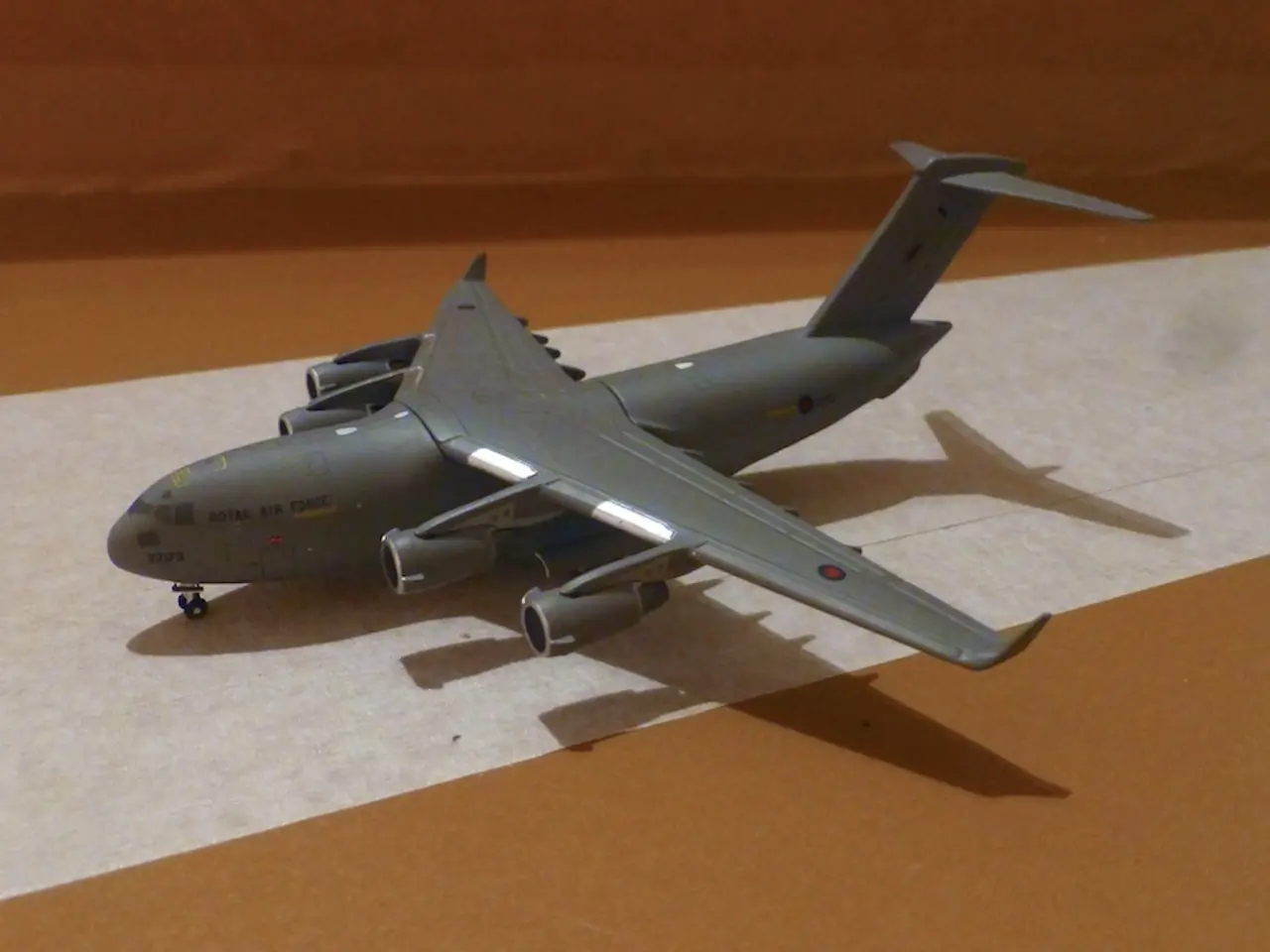Defense Department should persist in developing Adaptive Engine Technology, as urged by General Electric.
The F/A-XX program, a crucial component of the Navy's future carrier strike groups, finds itself in a state of limbo. Despite being minimally funded and officially paused to focus on the Air Force's F-47 sixth-generation fighter, Congressional support is pushing for its revitalization.
GE, a key player in this saga, stands ready to deliver on the Next-Generation Adaptive Propulsion (NGAP) program for the Navy's sixth-generation fighter. This advanced propulsion technology, being developed for the F/A-XX, offers more acceleration for fighter maneuvers and reduced fuel consumption in cruise or loiter modes. Both GE and Pratt & Whitney, the propulsion partners for the NGAP program, assert they can deliver these engines on the originally planned timeline.
The current predicament of the F/A-XX program is a result of several challenges. A major hurdle is the constraint of the U.S. defense industrial base and skilled engineering workforce, deemed unable to handle simultaneous rapid development of two major sixth-generation fighter programs - the Navy’s F/A-XX and the Air Force’s F-47. This has led to strategic decisions to prioritize one program over the other.
Another challenge is the limited funding allocated for the F/A-XX program. The Pentagon’s budget proposals have only provided funds for initial design work, reflecting tensions between Navy priorities and broader DoD budget decisions. Congress is attempting to reverse this limitation by injecting more funding via its appropriations bills.
The strategic risks of delaying the F/A-XX are also a significant concern. A potential gap in the Navy’s future carrier air wing capabilities could allow rival nations like China to gain an edge in carrier-based next-gen fighters, threatening U.S. naval air superiority.
The development of the F/A-XX and the overlapping Next-Generation Adaptive Propulsion program also presents technological and integration challenges. Advanced propulsion developments typically face hurdles such as integrating new technologies with the airframe, managing costs and schedule risks, and achieving required performance improvements within constrained timelines.
The delicate balancing of these competing priorities impacts the pace and scope of U.S. Navy future fighter development. The Navy emphasizes the F/A-XX as critical for future carrier strike groups and air wing capabilities, but the Pentagon has been cautious due to industrial base constraints and prioritization of the Air Force program.
The Global Combat Air Program, a partnership between Italy, the U.K., and Japan, is targeting a service date of 2035 for its sixth-generation fighter. Meanwhile, the Air Force's competitive NGAP development effort is expected to be ready for the F-47 in mid-2030, due to supply chain issues.
In the midst of this, Lockheed Martin CEO Jim Taiclet suggests using a souped-up F-35 as a bridge to the new fighter, as the F-47 may not be ready for five to 10 years. GE Aerospace CEO H. Lawrence Culp is urging the Pentagon to proceed with the Navy F/A-XX fighter program.
The Navy recognizes the need for a sixth-generation fighter for operations in highly contested environments. The Navy has included the F/A-XX in its annual Unfunded Priorities List, requesting $1.4 billion, and described it as a "critical component" of the "air wing of the future."
The White House, however, has expressed concerns about the availability of engineering talent to develop both the F/A-XX and the F-47 simultaneously, and claims that pursuing the F/A-XX may delay the higher-priority F-47 program.
As the F/A-XX program navigates these challenges, its future remains uncertain. The balance between prioritizing resources for the Air Force's F-47 and revitalizing the Navy's F/A-XX program is a delicate one, with significant implications for the U.S. Navy's future fighter capabilities.
[1] Defense News. (2021, July 13). F/A-XX: Navy's sixth-gen fighter program on pause as Air Force's F-47 takes center stage. Retrieved from https://www.defensenews.com/air/2021/07/13/fa-xx-navy-sixth-gen-fighter-program-on-pause-as-air-forces-f-47-takes-center-stage/
[2] Breaking Defense. (2021, July 12). Congressional Support for F/A-XX Amid Navy's Pause. Retrieved from https://breakingdefense.com/2021/07/congressional-support-for-fa-xx-amid-navys-pause/
[3] Aviation Week. (2021, July 12). Navy's F/A-XX Fighter Program Stalls as Air Force's F-47 Takes Priority. Retrieved from https://aviationweek.com/the-aviation-week-network/navys-fa-xx-fighter-program-stalls-air-forces-f-47-takes-priority
[4] Military.com. (2021, July 12). Navy's F/A-XX Fighter Program on Hold as Air Force's F-47 Moves Forward. Retrieved from https://www.military.com/daily-news/2021/07/12/navys-fa-xx-fighter-program-hold-air-forces-f-47-moves-forward.html
- The F/A-XX program, a crucial element in the Navy's future carrier strike groups, is being advocated for by Congress despite being minimally funded, officially paused, and overshadowed by the Air Force's F-47 fighter.
- GE Aerospace, a significant contributor to the F/A-XX saga, assures delivery of advanced propulsion engines for the Navy's sixth-generation fighter, the Next-Generation Adaptive Propulsion program, on the originally planned timeline.
- The development of both the F/A-XX program and its overlapping Next-Generation Adaptive Propulsion program present technological challenges, including integrating new technologies with the airframe, managing costs and schedule risks, and achieving performance improvements within constrained timelines.
- The strategic risks of delaying the F/A-XX are concerning, as it could allow rival nations like China to potentially gain an edge in carrier-based next-gen fighters, potentially threatening U.S. naval air superiority.
- Lockheed Martin's CEO suggests using a souped-up F-35 as a bridge to the new fighter, as the F-47 may not be ready for five to 10 years, while GE Aerospace's CEO urges the Pentagon to proceed with the Navy F/A-XX fighter program, emphasizing its importance for future carrier strike groups and air wing capabilities.








